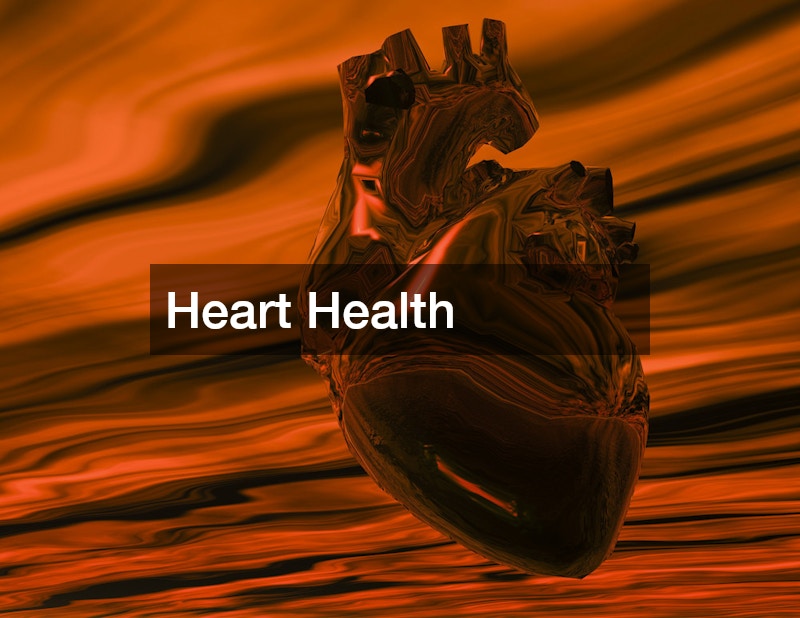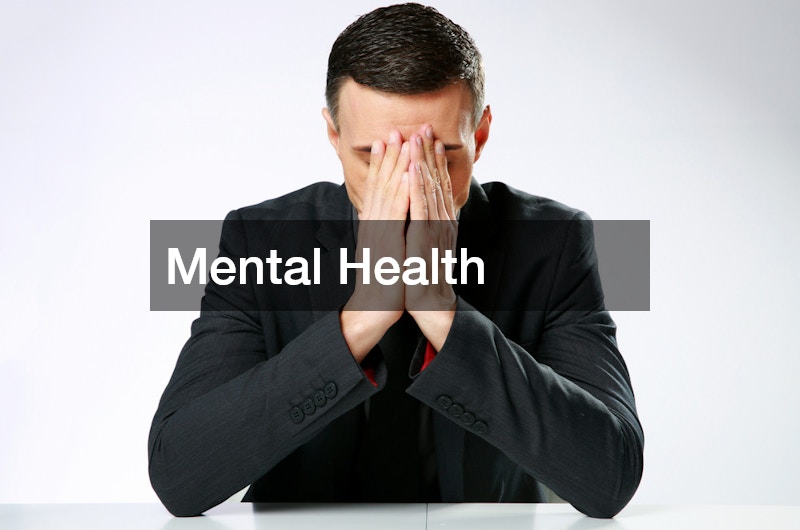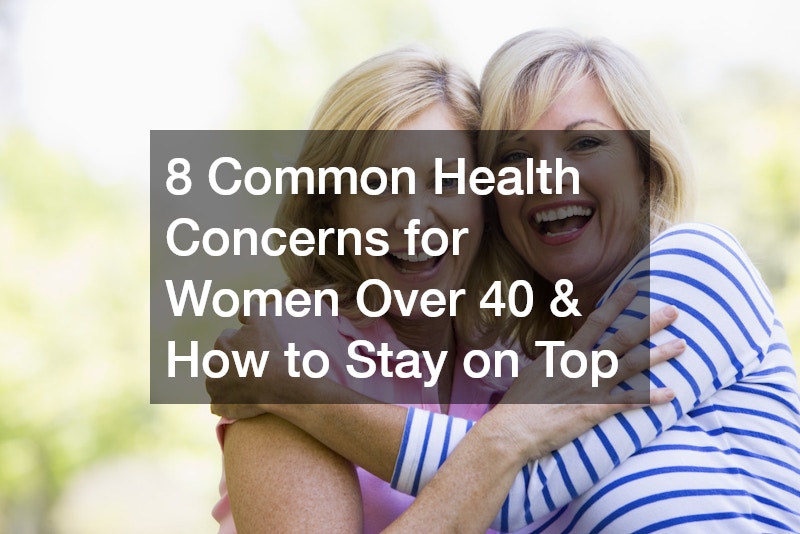The 40s are a major milestone in the life of a woman. This decade also brings with it a variety of changes to health and well-being. Women in their 40s need to be more aware of their bodies and take proactive measures to maintain good health. Let’s look at eight health risks women might face in their 40s and offer practical advice on how to manage them.
1. Heart Health

According to the World Heart Federation (WHF), cardiovascular disease kills more women each year than cancer combined. It accounts for 35 percent of all female deaths. The risk of heart disease increases as women near menopause. This change is due to the decline in estrogen levels. These lower levels can cause hypertension and cardiovascular problems.
Diet and Exercise
Adopting a heart-healthy lifestyle is one proactive way to reduce these risks. It is important to eat a healthy diet that includes fruits, vegetables, and whole grains. Lean proteins are also recommended. Integrating regular physical activity is also important. Exercises like cycling, swimming, or brisk walking not only promote heart health but also help with weight loss and stress management.
Stress Management
Stress management is important because chronic stress can affect heart health. Relaxation techniques like yoga, meditation, or deep breathing can reduce stress and improve overall well-being.
Regular Checkups
Regular checkups with your doctor are important. These appointments are a great way to get your heart checked, address any concerns, and receive personalised prevention and management recommendations.
Your healthcare provider can refer you to a local clinic if you have concerns or risks. These clinics have the resources and expertise to provide comprehensive care for cardiovascular health.
2. Breast Health
While advances in breast cancer treatments have led to a decline in mortality rates, this disease continues to be a major concern for women. Breast cancer is still the second leading cause of cancer-related deaths in women, despite progress. This highlights the need for proactive breast health management.
Breast Screening
Early detection is key to successful treatment. Regular mammograms and breast self-examinations are vital for this. It’s important to be aware of any changes to the breast texture or appearance. Be on the lookout for any lumps, changes in breast size or shape, or skin dimpling.
Family History
Understanding your family history is another important aspect of breast health. Understanding the genetic predisposition to breast cancer will help individuals make informed decisions regarding screening frequency and risk reduction interventions. By having an open and honest discussion with your healthcare provider, you can ensure that your screening protocol is tailored to your personal risk profile.
Adopting a Healthy Lifestyle
A healthy lifestyle will help reduce breast cancer risks. Maintaining a healthy weight with a balanced diet, regular exercise, and a healthy lifestyle can reduce the risk of breast cancer.
Limiting alcohol consumption and quitting smoking are also prudent lifestyle choices which can reduce the risk. Adding immune-boosting techniques, such as receiving an IV service containing essential vitamins and nutrition, can improve overall health and reduce the risk of breast cancer.
3. Bone Health
As women age, osteoporosis is a major concern. It is characterised by a decreased bone density. This condition can lead to fractures or other complications.
Calcium and Vitamin D: Nourishing Your Bones
Calcium and vitamin D are essential for maintaining bone density and strength. Calcium-rich foods, such as dairy, leafy greens, and fortified products, can provide a strong nutritional foundation. Vitamin D obtained from sunlight or supplements also helps calcium absorption and increases bone density.
Strengthening through Exercise
Weight-bearing exercise is essential to maintaining bone health. Exercises like jogging or strength training, which put bones under beneficial stress, stimulate them to adapt and grow stronger. It not only increases bone density but also improves balance and strength. This reduces the risk of fractures and falls.
Monitoring and Prevention Measures
Regular bone density tests are crucial in monitoring bone health, and can guide preventive measures. Dual-energy-X-ray-absorption-tiometry scans (DEXAs) assess bone mineral densities and detect signs of osteoporosis. With this information, patients can take proactive measures to protect their bone health. This may include referrals to chiropractic clinics to receive specialised care.
Specialised Care
Physical therapy provides targeted interventions that enhance musculoskeletal health, such as exercises that improve balance and strength. Physical therapists also provide personalised assessments, guidance, and advice on fall prevention and proper body mechanics.
Alternative approaches, such as acupuncture and osteopathic manipulative therapy, can also be used to relieve symptoms. Integrating a comprehensive plan with a reputable chiropractic clinic that offers additional support via various therapies and recommendations tailored for musculoskeletal issues can enhance bone health.
4. Reproductive Health
Women often experience significant changes in their reproductive health as they enter their 40s. During this phase of life, women may experience irregular menstrual cycles, hormonal changes, and declining fertility. Understanding these transitions will help you manage your reproductive health and plan for the future.
Contraception and Family Planning: Considerations
Contraception and family planning are essential for women in their 40s due to declining fertility and increased risks of pregnancy complications. By discussing these concerns with their healthcare provider, individuals can explore different contraceptive methods that are tailored to meet their individual needs and preferences. In addition, women can make informed decisions regarding their reproductive future with the help of proactive family planning conversations.
Explore Fertility Treatment Options
If you are in your 40s and want to get pregnant, it may be worth exploring fertility treatments. Fertility treatments like in vitro fertilisation (IVF), egg freezing, ovulation stimulation, and ovulation induction can help overcome age-related fertility issues and achieve family planning goals. A fertility specialist can guide you through the treatment process and provide insight into your options.
Managing Menopausal Symptoms
Women transitioning from perimenopause to menopause may experience various symptoms. These include hot flushes and sleep disturbances. It is important to manage these symptoms in order to maintain overall health and quality of life. Hormone Replacement Therapy, also known as hormone replacement therapy (HRT), offers relief from symptoms of menopause by supplementing decreasing hormone levels. It’s best to discuss the pros and cons of HRT with your healthcare provider in order to find the right approach.
5. Mental Health

Stress, anxiety, and depression are common mental health concerns in the 40s. These issues can be caused by hormonal changes, life transitions, and caring responsibilities.
Prioritising Self-Care
Prioritising self-care is essential to maintaining mental health in the midst of everyday life. Engaging in activities that bring you joy and fulfilment – whether through a hobby, time spent in nature, or self-care – can help relieve stress. A strong support system of family and friends can also be a source of validation and emotional support during difficult times.
Relaxation and Rest Is Important for Everyone
Rest and relaxation are essential to maintaining mental health. They can be achieved by seeking professional help and using stress reduction techniques. Self-care includes taking breaks, establishing boundaries, and making time for leisure. Vacation homes offer a peaceful retreat from the stresses of daily life.
Seeking Professional Support
Seeking professional help when mental health issues become overwhelming is an important step to healing and recovery. An anxiety centre provides specialised support and care for people with anxiety disorders. They offer a variety of therapeutic interventions that are tailored to the individual’s needs. These centres offer a range of therapeutic interventions, from cognitive-behavioural therapies (CBT) and mindfulness-based approaches to help individuals manage anxiety.
6. Joint Health
As women age, they experience more joint pain and stiffness. This can affect their mobility and quality of life. Osteoarthritis can get worse with age. Fibromyalgia is a condition characterised by widespread pain in the musculoskeletal system, fatigue, and sleep disturbances. It adds a new layer of complexity to managing joint health. This requires a multidisciplinary and comprehensive approach that incorporates treatment methods. It is important to address these issues as early as possible in order to preserve joint function and minimise discomfort.
Avoiding Joint Strain
Avoid activities that put undue stress on your joints to prevent joint stiffness and pain. Repeated motions and high-impact exercise can cause joint discomfort, which will lead to further degeneration over time. Choose activities that increase joint range of motion and flexibility without excessive stress.
Explore Pain Management Strategies
Seeking advice from your healthcare provider when joint pain becomes a problem is important. Your healthcare provider will be able to offer you pain management strategies that are tailored to your specific needs. These may be over-the-counter medications or prescription drugs.
Your healthcare provider may recommend that you visit a Physical Rehabilitation Centre for more comprehensive treatment. This will address the underlying musculoskeletal issues and strengthen affected joints to improve mobility and reduce discomfort.
7. Vision and Eye Health
As women age, they experience a variety of vision changes, including presbyopia and other age-related conditions. These changes can affect daily activities and quality of life.
Prioritising Regular Eye Exams
Regular eye examinations with an optometrist and/or ophthalmologist are essential to monitor vision changes and detect any eye conditions early. Comprehensive eye exams are able to identify refractive errors, cataracts, and glaucoma. This allows for early intervention.
Embracing Protective Eyewear
It is important to wear the right eyewear to protect your eye health and prevent strain or damage. Wearing reading glasses can help alleviate the symptoms of presbyopia, and sunglasses with UV protection shield eyes from harmful radiation. Consider using special sheets for better sleep to indirectly benefit your eye health. Quality rest is important for ocular and overall health.
Quality Sleep
A good night’s sleep is essential for maintaining optimal eye health and overall well-being. Poor sleep can lead to a variety of eye problems, including dry eyes, eye strain, and vision issues. To promote quality sleep and support eye health, it is important to create a sleep-friendly atmosphere. This means investing in bedding that is comfortable and relaxing, like bedsheets. The bedroom should be dark, quiet, and comfortable in temperature.
8. Oral Health
Oral health is often neglected, but it plays an important role in overall well-being, especially as people enter their 40s. This life stage can bring on a variety of dental problems, such as gum disease, decay, and tooth loss. It is important to understand the importance of oral health to prevent complications and maintain a healthy smile.
Good oral hygiene is essential to maintaining good oral health in adulthood. Regular brushing and swishing effectively remove plaque and bacteria, which reduces the risk of gum disease and cavities. A regular checkup with your dentist will allow you to detect any potential problems early, and take preventative measures.
In Summary
You will face a number of health issues as you enter your 40s, but by being proactive and educating yourself, you can ensure your well-being and health throughout the decade. Adopting healthy habits and addressing the eight most common health risks will help you live a fulfilling and vibrant life well into your 40s.
Keep informed about health risks and take proactive measures to reduce them. Invest wisely in your health, as it is the most valuable asset you have.
